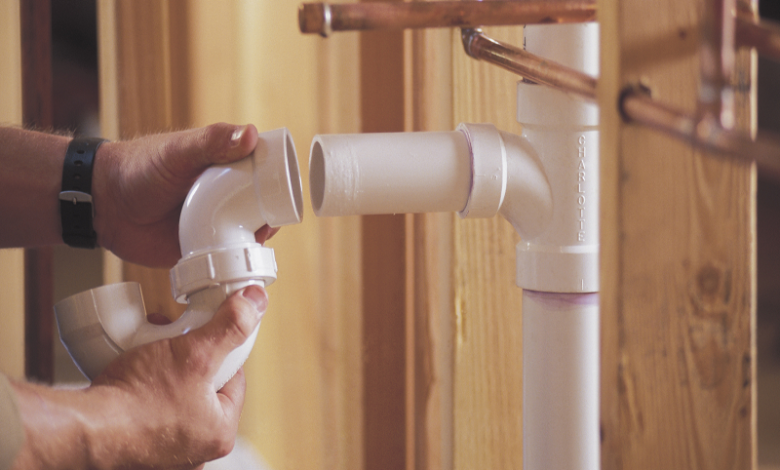PVC Safety Concerns: Examining Scientific Evidence

Polyvinyl chloride (PVC) is a ubiquitous material found in numerous products, from construction materials to medical devices and household items. While PVC offers many benefits, including durability, versatility, and affordability, it has also been the subject of safety concerns. In recent years, debates and discussions have emerged regarding the potential health and environmental risks associated with PVC. In this article, we will delve into the scientific evidence surrounding is pvc safe concerns, examining the research and providing insights into the risks and considerations associated with this widely used polymer.
Understanding PVC
Polyvinyl chloride (PVC) is a type of plastic polymer derived from vinyl chloride monomers. It can be manufactured in both rigid and flexible forms, making it suitable for a wide range of applications. PVC is valued for its chemical resistance, durability, and cost-effectiveness, making it a popular choice in industries such as construction, healthcare, automotive, and packaging.
Common PVC Safety Concerns
Several factors contribute to safety concerns surrounding PVC, including:
Chemical Additives: PVC often contains additives such as plasticizers, stabilizers, and flame retardants to enhance its properties. Some of these additives, such as certain phthalates and lead-based stabilizers, have raised concerns about potential health risks, particularly in applications where PVC comes into contact with food, water, or the human body.
Environmental Impact: The production, use, and disposal of PVC can have environmental consequences, including the release of toxic chemicals and greenhouse gas emissions. Concerns about PVC’s environmental footprint have prompted calls for more sustainable alternatives and recycling initiatives.
Health Risks: Studies have suggested potential associations between PVC exposure and adverse health effects, including respiratory issues, reproductive disorders, and cancer. However, the extent of these risks and the mechanisms by which PVC may pose health hazards are subjects of ongoing research and debate.
Scientific Evidence and Research Findings
While PVC safety concerns are valid and warrant attention, it is essential to examine the scientific evidence and research findings to gain a clearer understanding of the risks involved. Here are some key insights from scientific studies and assessments:
Chemical Migration Studies: Research has demonstrated that certain chemicals used in PVC production, such as phthalates and lead-based stabilizers, can migrate from PVC products into the surrounding environment, particularly under conditions of heat or prolonged use. However, the extent of migration and the resulting human exposure levels depend on factors such as product composition, usage patterns, and environmental conditions.
Toxicological Assessments: Toxicological studies have evaluated the potential health effects of PVC additives on human health. While some studies have reported associations between PVC exposure and adverse health outcomes, such as respiratory problems or reproductive disorders, the overall evidence is inconclusive, and further research is needed to establish causal relationships and assess the significance of these findings.
Regulatory Standards and Guidelines: Regulatory agencies, such as the U.S. Food and Drug Administration (FDA), the European Chemicals Agency (ECHA), and the Consumer Product Safety Commission (CPSC), set limits on the use of additives in PVC products and establish safety standards to protect human health and the environment. Compliance with these regulations helps mitigate potential risks associated with PVC use.
Life Cycle Assessments (LCAs): LCAs evaluate the environmental impact of PVC products throughout their entire life cycle, from raw material extraction to end-of-life disposal. While PVC production and disposal can have environmental consequences, studies have shown that PVC products can compare favorably to alternative materials in terms of resource efficiency and energy consumption.
Addressing PVC Safety Concerns
To address PVC safety concerns and mitigate potential risks, several strategies and approaches can be considered:
Substitution: Identifying and adopting alternative materials and manufacturing processes that reduce or eliminate the use of hazardous additives can help minimize health and environmental risks associated with PVC. Bio-based polymers, non-toxic stabilizers, and eco-friendly alternatives offer promising alternatives to conventional PVC formulations.
Regulatory Compliance: Ensuring compliance with existing regulations and standards governing PVC production, use, and disposal is essential for safeguarding public health and the environment. Regulatory agencies play a crucial role in monitoring and enforcing compliance with safety guidelines and addressing emerging concerns through evidence-based assessments.
Risk Communication: Providing transparent and accurate information about PVC safety, including potential risks and mitigation measures, is essential for promoting informed decision-making among stakeholders, including consumers, manufacturers, and policymakers. Effective risk communication fosters trust and accountability and empowers individuals to make choices that align with their values and preferences.
Research and Innovation: Investing in research and innovation to advance the understanding is pvc safe and develop safer, more sustainable alternatives is critical for addressing current and future challenges. Collaborative efforts between academia, industry, and government agencies can drive progress in areas such as toxicology, materials science, and environmental engineering.
Conclusion
PVC safety concerns represent a complex and multifaceted issue that requires careful consideration and evaluation of scientific evidence. While PVC offers many benefits, including versatility and affordability, it is essential to acknowledge and address the potential risks associated with its use. By examining the scientific research, complying with regulatory standards, and fostering innovation and collaboration, we can work towards minimizing the environmental and health impacts of PVC while meeting the needs of society. Ultimately, a balanced approach that considers safety, sustainability, and technological advancement is key to addressing PVC safety concerns and ensuring a safer and healthier future for all.




